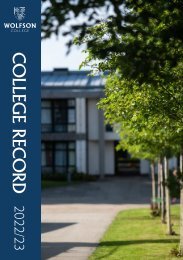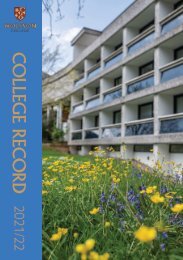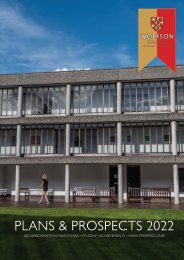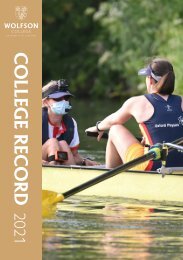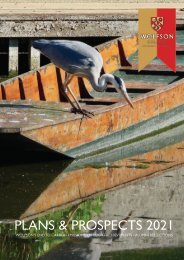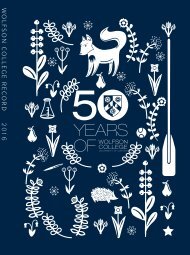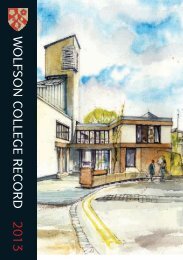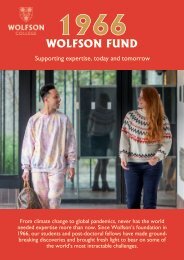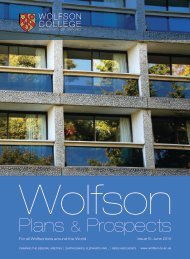You also want an ePaper? Increase the reach of your titles
YUMPU automatically turns print PDFs into web optimized ePapers that Google loves.
Plastic in<br />
Paradise<br />
Josephine Mahony, Ecology and Climate Science student at Wolfson <strong>College</strong>, returns<br />
from a successful mission to clean up plastic at the remote island of Aldabra. The<br />
project was to return the island to its pristine state by reducing plastic waste.<br />
Sir David Attenborough once commented that the Aldabra Atoll is ‘one of the world’s greatest<br />
surviving natural treasures’. Aldabra, the world’s second-largest coral atoll, is one of the<br />
Outer Islands of the Seychelles in the Indian Ocean. It has escaped many human threats over<br />
the centuries, but plastic pollution has found its way there. The project of clearing the<br />
island of man-made rubbish was launched in 2018, with generous sponsorship, corporate and<br />
individual. It has attracted growing international interest and was highlighted at the G7 Summit<br />
in 2018 by the President of the Seychelles. The team, seven from the Seychelles and five<br />
from Oxford, included Josephine Mahony, a fourth-year DPhil student at Wolfson in Ecology<br />
and Climate Science in East-Africa. On 16 February they went to Mahé, the largest island in<br />
the Seychelles, and on to Aldabra a week later, and only returned after five weeks of clearing<br />
the beaches from plastic.<br />
What was your first impression when you came to Aldabra?<br />
‘Oh, I cried. When you come closer to the island, you realise that there’s life everywhere.<br />
When we first arrived, there was an epic sunset, crabs all over the beach, sharks swimming in<br />
the water, and turtles nesting on the beach.’<br />
FEATURES<br />
And what about the plastic pollution?<br />
‘We were based in the south of the island, a part of Aldabra that is very inaccessible, which<br />
means that the plastic pollution there is hard to get rid of. There was a big difference between<br />
the amount of plastic on the beaches there compared with more northern beaches.<br />
In some places the plastic was two metres deep. It’s buried amongst the seaweed, but you’re<br />
pulling out entire chairs; we picked up about fifty thousand flip-flops, and a mass of lighters.<br />
We found just about everything you can think of that’s made of plastic.’<br />
Photo: Christian B<br />
Can you tell us a bit about the project?<br />
‘There were three different phases, the first one being the clean-up phase. This was the most<br />
physically intense part. The alarm went off at five in the morning, but it took a while to get<br />
ready. We were in camps with bunk beds and a cooker. If you wanted to go to the toilet,<br />
you had to work out when everyone else was going, and then walk a quarter of an hour<br />
past spiky rocks and deal with the mosquitoes. We had ten cups of water a day each for<br />
showering. All this meant we usually got started around 6:30. We’d walk to the nearest beach<br />
while carrying water and the sacks we needed, food, and lots of sun cream. We would create<br />
WOLFSON.OX.AC.UK<br />
27



